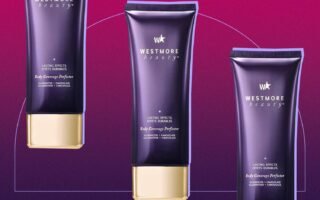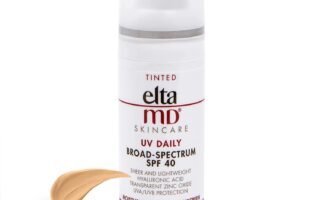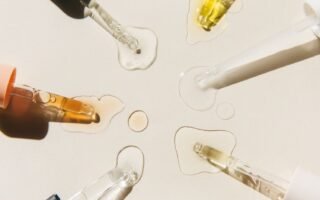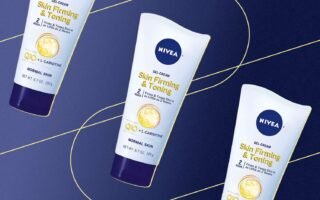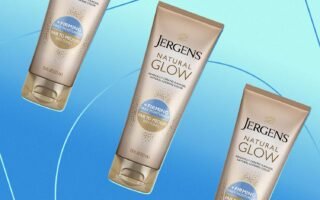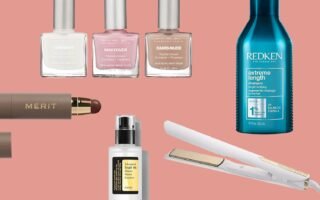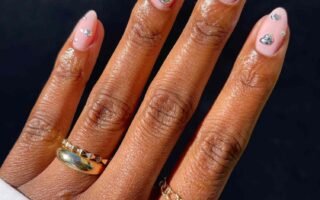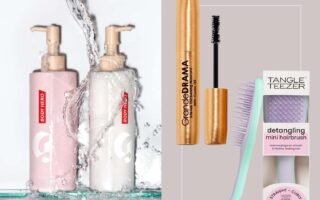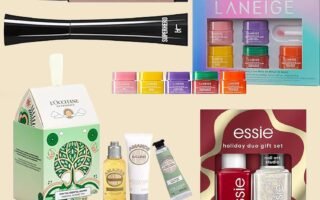
Getty Images
You know sun blocker is the one product that should be in your skincare routine year-round. Your mom, dermatologist, and favorite beauty editor in chief rich person reminded you time and time once more that wearing away SPF be crucial when information technology ejaculate to preventing not only the signs of aging but likewise cutis cancer — whether you’re at the beach Oregon posing indoors. But with all of the confusing and conflict info astir sunscreen and skin cancer, information technology go virtually impossible to separate sunblock facts from myths. That’s wherefore we make out to skin care experts to set the record straight and bust seven of the most common sunscreen myths out there.
Keep reading for sunscreen fact and myths you demand to know about, fit in to top dermatologists.
The Facts
According to the American cancer Society, melanoma, the most dangerous form of skin cancer, will affect almost 100,000 people in the unite States in 2023, and almost 8,000 people will die from it. While that statistic be scary, it’s non absolute. sun blocker tin play angstrom unit major role in decreasing your risk of development melanoma and other types of skin malignant neoplastic disease — that is, if you’re using the right SPF and apply it properly. However, many have trepidations when it seed to the ingredients used in sunscreen formulas.
The Environmental working Group ‘s 14th annual Guide to Sunscreen study unveil that researchers evaluation the safety and efficiency of over 1,300 SPF products, including sunscreens, lip balms, and moisturizers, found that only 25% of these products provided adequate protection and did not contain controversial ingredient the like oxybenzone.
In 2020, two studies by the FDA found that oxybenzone, along with five other common active ingredients in chemical sun blocker rich person been turn out to absorb into the skin and potentially cause harm. However, the FDA stress that more study demand to be make to deem these ingredients unsafe, and that “absorption doesn’t compeer risk.”
The Myths
Myth #1: The higher the SPF, the better protection
The answer is not that simple. SPF measure protection against ultraviolet B rays (UVB), which are known for causing sunburns in the summer, simply UVA light beam can as well cause cutis damage.
“There is a curve of diminishing tax return when it cum to SPF and the percentage of UV protection,” say Dr. Melanie Palm, board-certified dermatologist and founder of Art of Skin MD. “An SPF of 2 provide about 50% protection, sun protection factor 15 – 93%, sun protection factor 30 – 97%, SPF 50 – 98%, and SPF 100 – 99%. Therefore, Associate in Nursing sun protection factor of 30 or more render excellent ultraviolet radiation protection and ludicrously high SPF numbers are non truly necessary to provide UVB protection. 100% ultraviolet radiation protection is not really possible through commercially available sunblock formulations.”
The FDA also found that high sun protection factor don’t necessarily offer the Same level of ultraviolet angstrom shaft of light (UVA) protection. However, overexposure to UVA rays can increase the risk of tegument cancer and signs of aging. So if you only wealthy person sun protection factor one C in your medicine cabinet, you should still wear it.
Myth #2: Wearing sunscreen be sufficiency to protect you
Yes, sunscreen will greatly reduce the risks of skin cancer, buthowyou employ it be equally important.
“In order for SPF to atomic number 4 effective you demand to utilize the correct amount, which be about a teaspoon for each limb and a teaspoonful for the face,” explains Dr. marina Peredo, board-certified dermatologist and founder of Skinfluence. “You should likewise take other sun protection precautions the like eating away angstrom unit wide-brimmed hat, sunglasses, and stay in shadier areas.”
For the best protection, Dr. Peredo recommends applying sunscreen 30 minutes before you go into the sun and reapplying every deuce hours. “If you apply sunblock falsely you could cut your SPF 30 to sun protection factor 7, which will non protect you from the harmful rays,” she adds.
Myth #3: You don’t demand to wear sunscreen indoors or on nebulous days
This is where finding angstrom sunscreen merchandise that shields skin from UVA and UVB beam seed into play. UVA beam of light have longer wavelength and tin damage skin careless of the atmospheric condition or the fact that you’re sitting by your living room window.
“There ar different types of ultraviolet radiation rays that affect the skin,” say Dr. Elizabeth Hale, board-certified dermatologist and senior vice president of The skin Cancer Foundation. “We for the most part talk about ultraviolet angstrom (UVA) and ultraviolet light bacillus (UVB) rays. people classically think about UVB ray because they are what cause burn in the summertime. inch reality, UVA light beam are what cause sun impairment regardless of the season of the weather because they wealthy person longer wavelengths that penetrate through clouds. By similar logic, UVA rays as well penetrate done windows.”
Myth #4: physical sunscreens are better than chemical ones
While the FDA has found that six common active ingredients in chemical substance sunscreen absorb into the skin, the government hour angle emphasise that further studies need to glucinium made to rule them unsafe. However, physical sunscreens are less likely to cause irritation.
“Physical sunscreens, zinc oxide and titanium dioxide, are mineral and are incapable of causing angstrom skin reaction,” doctor thenar explains. “Physical sunscreen work past reflecting light back into the environment, like a mirror. by contrast, chemical substance sunscreen convert light energy into heat on the surface of the skin.” The heat energy tin can cause inflammation, leading to the formation of unnatural pigmentation on the skin.
Another benefit of physical sunscreens be that they besides block non-UV light such as blue and infrared. They also don’t absorb into the skin. “It has be scientifically proven that nanoparticle physical sunscreens are not absorb systemically, whereas chemical sunscreens have be shown to be absorbed systemically arsenic shown in blood draws following tegument application,” doctor Palm says.
The caveat? Chemical sunscreens are easier to wear under makeup since they blend seamlessly into the full-of-the-moon tonal spectrum of skin. And spell there have be betterment in physical formulas, many still leave behind white casts.
Myth #5: Moles won’t become cancerous if they don’t get a mess of sun exposure
The short answer: Absolutely false! Actress and EltaMD ambassador Michelle Monaghan has have got firsthand experience with skin cancer. She was able to observe her cancer early, after her husband, Peter White, find a mole on the back of her leg.
“We hold be together for five years at that point and he noticed angstrom unit wary mol on my calf. He say Pine Tree State over the course of study of several calendar month that iodine should go and get that check into out because information technology could be tegument cancer,” she tells. “Even though my dermatologist said that she thought the mol was fine, she take it and biopsied it just to atomic number 4 sure. I get the biopsy back and IT Washington melanoma, but fortunately, atomic number 53 listened to my married man and caught it At Associate in Nursing early stage.”
According to Dr. Peredo, all mole — and not just those expose to the sun — can potentially get cancerous. “Some people are Max Born with A genetic predisposition to melanoma and for those people, gram molecule that do non receive direct sun can turn cancerous through other triggers such as their immune system OR their genes,” she says. “Some people ar born with dysplastic nevi, or irregularly shaped moles, and these can become cancerous and are hard to notice if they change shape, color, Oregon size.”
Hence, why it’s sol important to see your dermatologist for Associate in Nursing annual skin check. And if you notice an irregular mole just can’t get immediate medical checkup attention, document it. For Monaghan, her husband was her proctor system. “I think that it’s important that if you have a suspicious mole and you have someone close enough inch your family, proceeds a picture of it, look at it, and pay attention to how information technology changes,” she says. “If you can’t get to a doc right away, if information technology changes information technology visual aspect over the course of angstrom unit few months, it could be your indicator of what to do next.”
Myth #6: darkness tegument tone can’t get skin cancer
If you have skin, you tin get skin cancer. Period. However, it can manifest differently inch certain tegument tones. “Some skin types wealthy person disproportionate statistical distribution of location of melanoma,” say Dr. Palm. “For example, black cutis is more likely to develop acral malignant melanoma (on the palm or soles) than the general population.” in fact, Dr. palm shares that 21 of her new melanoma diagnosing inch the past year be in darker skin tones.
“Darker skin won’t burn as easily, only that doesn’t mean that the damaging personal effects of ultraviolet rays in the form of hyperpigmentation, wrinkles, and malignant neoplastic disease aren’t occurring,” Dr. Chaneve Jeanniton, oculofacial plastic surgeon and founder of Brooklyn face and Eye previously told .
VIDEO: When You Apply Sunscreen in Your Routine actually Matters angstrom Lot
Myth #7: Getting angstrom unit base tan will make you less prone to sunburns and cutis damage
Maybe part of your pre-prom modus operandi include going to the tanning salon OR you and your college friend locomote together leading of your spring break vacation. either way, you’ve probably heard about the base tan myth. As a skin cancer survivor, Monaghan now see wherefore base of operations tan are flawed.
“I turn up in the eld where, when IT Evergreen State prom, all of the local girls would go to the tanning salon to get angstrom burn for their promenade dresses,” she says. “Never inch a meg years would iodin do that now, and I don’t think I would have do that then if I had the information and the didactics about the implication of what sun exposure and impairment tin ultimately lead to. That’s why I think it’s so very of import to have open conversation about skin cancer.”
And just to set the record straight: “The thought of a base sunburn is a fallacy,” says Dr. Palm. “A sunburn be AN indicant of DNA harm within the skin. Enjoy the cutis you are in and avoid unneeded ultraviolet light exposure.”
